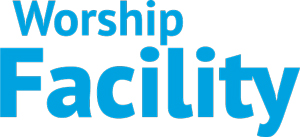By Carson Durham, AIA
For many, early memories of Sunday school involve dimly lit gymnasiums or small rooms crammed into corners of a church. White-painted walls, folding chairs, and mismatched furniture didn’t do much to stimulate creativity or interaction, but they were places to gather and learn about God’s love.
Today, children’s spaces are often what draw families through your doors and keep them coming back. Through proper planning, you can create fun, warm, and welcoming Christian education areas that help build growth potential and solidify your church’s long-term relevance.
If a PK-12 upgrade or new build is in your future, then these seven planning tips are a great place to begin.
1. Your Future Starts Now
When it comes to planning, it’s easy to focus only on what’s in front of you: the number of families that currently attend, available funds, timelines, and existing staff, but now’s the time to plan for the future, too.
A good way to start is by spending time with your data. Examine attendance records and look for trends. This can reveal your average growth percentage and predict what your church family will look like in 2026, 2031, and beyond.
Consider what’s happening adjacent to your church: Are housing developments under way? Are more families moving to the area? This information can help you estimate the amount of education space you’ll need.

2. Get the Right People Involved
Before you get too far into planning, talk to everyone who will use the PK-12 education spaces. Find out what they envision. The project will go much more smoothly if everyone has the same objectives in mind from the start.
How (and what) will volunteers teach in the space? How much will technology be used (now and in the future)? What are the security team’s biggest concerns about the space? How do children want to spend their time? Will parents use the area during moms’ groups or bring children to play there as a break from homeschooling? Make sure this insight is captured as early as possible.
3. Avoid “Over Multi-Purposing”
During the early stages of planning, it can be difficult to envision how spaces will be used. As a result, many churches default to planning a few multi-purpose rooms in hopes that they’ll “make it work” when the time comes.
You might be able to use one room to accommodate Wednesday night adult Bible study, regular staff training during the day, and Sunday morning children’s education … but everyone’s experiences will likely suffer as you face competing needs.
Flexibility can be a good thing—but it’s also possible to take the concept a little too far. Be intentional with your planning by determining the specific types of spaces you’ll need and how they’ll be used.

4. Don’t Forget Future Churchgoers
Think about your future PK-12 education areas through the eyes of a first-time worshipper. Envisioning the space from this perspective can help with planning and decision-making.
Will they be able to get from the parking lot to wherever you want them to go first? Will there be signs that make it simple to navigate without having to ask someone for directions? Is the drop-off/check-in process clear?
The process of checking children in and out of an education area is often an afterthought, but it’s not a factor you want to ignore. It’s a vital part of safety and often the first interaction a parent and child have with your church. That experience can set the tone for the rest of their day.

5. Consider How Children Learn
As outside factors change the way children learn and interact—from using technology for ministry to a growing emphasis on teamwork—the church spaces that support children’s education need to shift, too.
Modern Christian education formats bring kids of all ages together for worship, videos, music, dancing, and storytelling before gathering in smaller groups for age-appropriate discussions, Bible studies, and activities.
Instead of lining up several small spaces like classrooms, think about the format of your programming (or the format you wish you had) and plan accordingly. Would it be beneficial to create one large area that allows everyone to worship together and then scatter into small groups throughout the space?
6. Keep All Ages & Needs in Mind
Don’t plan for “children”—plan for kids at every stage of development, from toddlers to high schoolers. Each group will have different expectations for their learning environments.
While ninth graders may be listening to music and discussing how Psalms serves as inspiration for some of today’s secular music, second-grade students might be busy drawing animals in sets of two as they study the story of Noah’s Ark. Think about the activities and lessons appropriate for different ages and build that into your plan.
In addition to accommodating different ages, it’s also important to plan for children with special needs—even if they’re not part of your congregation right now. Dedicating space to this population will ensure comfort and confidence as they engage with other children while also having easy access to spaces of their own for downtime.

7. Call on Experts
When you reach children, you reach their parents, too. PK-12 education spaces are often the difference-maker: the deciding factor families use to determine where they’ll worship.
As you plan your next PK-12 space, seek counsel from creative experts who can think outside the box and consider the big picture. They can help align your ministry’s vision with what your spaces have to offer.
Carson Durham is a principal and director of BLDD Architects’ religious design group.

